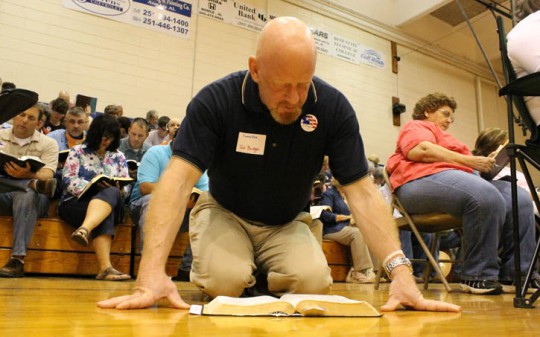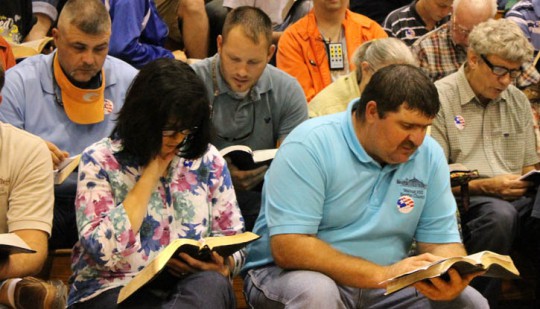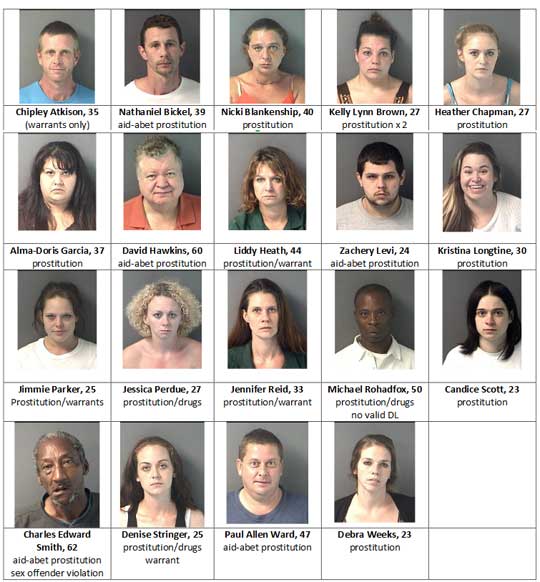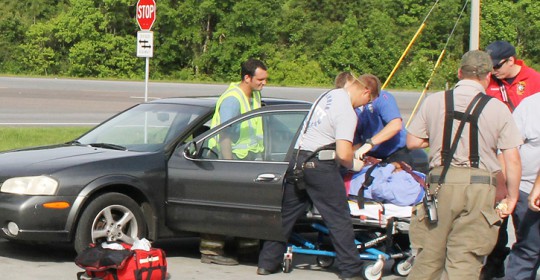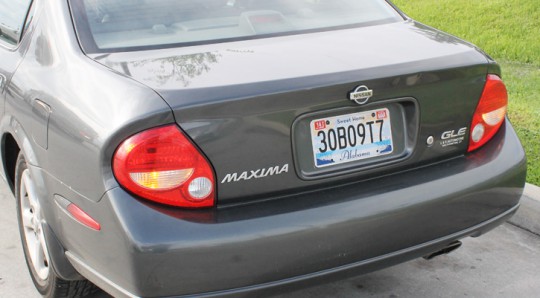Lawmakers Approve Texting While Driving Ban, Awaiting Scott’s Signature
May 3, 2013
Texting while driving will be illegal in Florida if Gov. Rick Scott signs legislation sent to him by the Senate on Thursday after a years-long effort to join most other states in outlawing it.
The Senate voted 39-1 in favor of a bill (SB 52) that makes it illegal to read or type texts or emails while actually driving, though it would remain legal to do it while stopped, such as at a red light.
Scott hasn’t said whether he’ll sign the bill.
 Under the measure as passed, only drivers who are pulled over for something else, such as careless driving or speeding, and then are determined to have been texting while driving, could be cited. And in most cases, police and prosecutors won’t be able to seek the driver’s cell phone records to prove it. Under an amendment added to the bill this week by the House, records could only be sought if there were an injury or death in a crash.
Under the measure as passed, only drivers who are pulled over for something else, such as careless driving or speeding, and then are determined to have been texting while driving, could be cited. And in most cases, police and prosecutors won’t be able to seek the driver’s cell phone records to prove it. Under an amendment added to the bill this week by the House, records could only be sought if there were an injury or death in a crash.
That provision weakened the bill, but the measure’s Senate sponsor said the fight to get a texting ban has been long and so it was better to go along with that than not pass the bill – and she said the measure still could reduce the dangerous practice, particularly among kids.
“This bill is still a good bill, it still will allow parents today to say to their kids ‘Don’t text, it’s against the law,’” said Sen. Nancy Detert, R-Venice, who has pushed for the ban unsuccessfully for years.
On the second-to-last day of the legislative session, there was a risk that stripping the House provision on cell phone records and sending it back to the House would keep the bill from passing.
If Scott were to approve, Florida would become one of the last states to have any kind of restriction on texting while driving.
The measure has an exception for use of a GPS device, or for reporting criminal behavior. The bill also allows talk-to-text technology to be used, as long as the driver isn’t typing or reading the message. In addition to texting, the bill includes reading or writing emails, or other messages.
By The News Service of Florida
$58 Million In Projects Proposed, Including $20 Million Fish Hatchery
May 3, 2013
Trustees for the Deepwater Horizon Natural Resource Damage Assessment have proposed $58 million in restoration projects along the state’s oil spill-affected Gulf coast — including a $20 million fish hatchery in Pensacola and $14 million in other projects in the county.
Originally presented to the City Council in June 2011, the Florida Gulf Coast Marine Fisheries Hatchery and Enhancement Center is slated to include a state-of-the-art saltwater fish hatchery, an integrated coastal habitat plant production facility, and a venue for public outreach and education on marine resources conservation. The Council voted unanimously to authorize Mayor Hayward to negotiate a lease for the proposed hatchery at the Bruce Beach site, located south of Main Street west of the Community Maritime Park.
“This is a huge win for Pensacola,” said Mayor Hayward. “This hatchery will be a tremendous asset for our community and our region. Over the past two years, I’ve been fighting every day to make sure Pensacola gets the funding and the resources we deserve. I want to thank Governor Rick Scott for his continued leadership and advocacy for our state and for Northwest Florida.”
The projects would be paid out of a $100 million pot of money from BP from an April 2011 agreement that is overseen by the trustees. Florida has already approved and begun work on seven projects, including several boat ramps, dune restoration, and shorebird and sea turtle habitat restoration.
In the Escambia and Santa Rosa county areas, the projects also include:
- Florida Gulf Coast Marine Fisheries Hatchery/ Enhancement Center, Escambia County. Approximately $20 million
- Florida Artificial Reef Creation and Restoration, Escambia, Santa Rosa, Okaloosa, Walton, and Bay counties. Approximately $11.4 million
- Pensacola Bay Living Shoreline, Escambia County. Approximately $11 million
- Florida Oyster Reef Restoration Escambia, Santa Rosa, Bay and Franklin counties. Approximately $5.4 million
- Scallop Enhancement for Increased Recreational Fishing Opportunity in the Florida Panhandle, Escambia, Santa Rosa, Okaloosa, Walton, Bay, Gulf, and Franklin counties. Approximately $3 million
- Big Lagoon State Park Boat Ramp Improvement, Escambia County. Approximately $1.5 million
- Bob Sikes Pier Restoration, Escambia County. Approximately $1 million
- Perdido Key Boardwalk Improvements, Escambia County. Approximately $600,000
- Perdido Key Dune Restoration, Escambia County. Approximately $600,000
“These early restoration projects will help revitalize our precious coastal ecology and restore our area’s natural resources after the damage of the BP oil spill,” said Rep Clay Ingram. “I am also hopeful that these plans will help ease the economic losses suffered by so many members of our community who depend on the environment for business and recreation.”
“We’re committed to restoring the environment and economy that families have relied upon in the Gulf for generations,” said Gov. Rick Scott. “These $58 million in Florida projects represent a critical step forward in recovering from the natural resource and recreational losses that resulted from the BP oil spill.”
National Day Of Prayer Observed In Century, Atmore
May 3, 2013
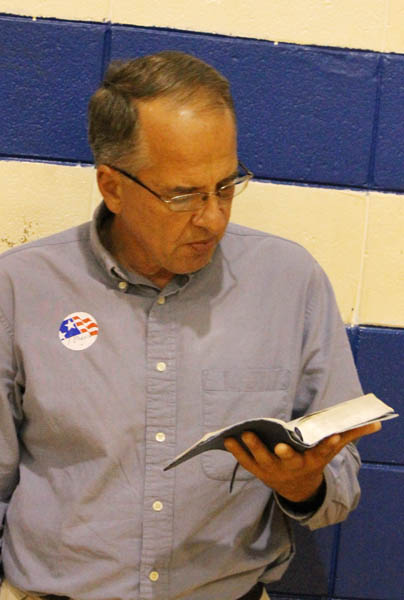 From iPads and iPhones, to the tattered and torn pages of cherished family Bibles, participants in a National Day of Prayer event in Atmore read the entire Bible aloud in just 30 minutes Thursday evening.
From iPads and iPhones, to the tattered and torn pages of cherished family Bibles, participants in a National Day of Prayer event in Atmore read the entire Bible aloud in just 30 minutes Thursday evening.
In Atmore, the threat of rain from the heavens pushed about 300 National Day of Prayer participants from a local park into the gym at Escambia County High School. Community, business and spiritual leaders led those gathered in prayer before the annual Bible reading.
In Century, community leaders gathered in prayer, asking for God’s favor on their town, surrounding communities and the nation.
For more photos from the Atmore National Day of Prayer events, click here.
Pictured top: Rev. Ted Bridges of the Walnut Hill Baptist Church, on his knees, reading from his Bible during a National Day of Prayer event Thursday evening in Atmore. Pictured inset: Dr. Johnathon Yoder of Atmore reads aloud from his Bible. Pictured below: Luanne Henderson and Lonnie Wilson at the Atmore Bible reading event. NorthEscambia.com photos, click to enlarge.
Four Kids Found In Home With Meth Lab
May 3, 2013
Authorities say they found four children living in a home where they discovered an active meth lab.
The Escambia County Sheriff’s Office found the working meth lab inside a home in the 8500 block of Acapulco Camino. Inside the home with four children, deputies reported finding numerous materials commonly used in the manufacture of methamphetamine.
The children – ages 1, 9, 11 and 13 — were turned over to other family members for care, and a hazardous materials team was called to clean up hydrochloric acid and other chemicals.
Melissa Rae Anderson, 37; Richard Melcolm Anderson, 53; Hershel Keith Cranford, 31; Shelly M. Cranford, 27; and Camron Lechelle Hummel, 34, were each charged with manufacturing methamphetamine with a child present, two counts of producing methamphetamine, possession of narcotics equipment, and two counts of possession of a chemical with the intent to manufacture methamphetamine.
They were booked into the Escambia County Jail with bond set at $86,000 each. All five remained in the Escambia County Jail early Friday morning.
Biscuits Blast Wahoos 6-1
May 3, 2013
The Montgomery Biscuits smacked two home runs en route to a 6-1 win over the Pensacola Blue Wahoos in front of 4,206 fans on Thursday night at Pensacola Bayfront Stadium.
The game was originally delayed an hour and 28 minutes by rain and both offenses came out cold. Neither team had a hit through three innings before Montgomery ignited their onslaught. With one out, Mikie Mahtook walked, Cameron Seitzer singled and Todd Glaesmann blasted a three-run homer to left off of Ryan Dennick for a 3-0 lead.
An inning later, it was Mahtook delivering the goods as he launched a two-run homer off Dennick to push Montgomery’s lead to 5-0. Dennick (1-2) went just five frames, allowing a season-high five runs on five hits.
The Biscuits added their sixth run of the day on an RBI single in the sixth from Shawn O’Malley.
Pensacola’s lone run came on an RBI single from Brodie Greene in the seventh that scored Tucker Barnhart who had doubled earlier in the frame.
Matt Buschmann (3-1) was dominant for Montgomery, going a season-high eight innings and yielding just a run on five hits combined with eight strikeouts.
The Blue Wahoos continue their series with the Biscuits on Friday night with a 7:00 p.m. first pitch. Daniel Renken gets the start for Pensacola against Montgomery’s Merrill Kelly.
story by Kevin Burke
21 Arrested In Internet Prostitution Investigation
May 3, 2013
An Escambia County Sheriff’s Off task force has arrested 21 1 people in an internet prostitution investigation known as “Operation Back Page”.
One Injured In Minor Hwy 97, Hwy 29 Accident
May 3, 2013
One person was injured in a minor accident Thursday afternoon at the intersection of Highway 97 and Highway 29 in Molino.
 The driver of a Nissan Maxima was stopped at a stop sign on Highway 97 when she was lightly bumped from the rear by the driver of a Toyota Hybrid, witnesses said. Both vehicles were moved to the nearby Tom Thumb parking lot.
The driver of a Nissan Maxima was stopped at a stop sign on Highway 97 when she was lightly bumped from the rear by the driver of a Toyota Hybrid, witnesses said. Both vehicles were moved to the nearby Tom Thumb parking lot.
The driver of the Maxima was transported by Escambia County EMS after complaining of injuries in the low-speed crash. Her condition was not available.
The only obvious damage to either vehicle was small scuff mark on the bumper of the Maxima. The accident is under investigation by the Florida Highway Patrol. Further details were not available.
NorthEscambia.com photos, click to enlarge.
Southeastern Conference, ESPN Announce New SEC TV Network
May 3, 2013
A new SEC television network which launch next year.
The Southeastern Conference and ESPN have signed a 20-year agreement through 2034 to create and operate a multiplatform network, which will launch in August 2014, it was announced today by SEC Commissioner Mike Slive and ESPN President John Skipper. The new network and its accompanying digital platform will air SEC content 24/7 including more than 1,000 events in its first year.
 The network will televise approximately 45 SEC football games, more than 100 men’s basketball games, 60 women’s basketball games, 75 baseball games, and events from across the SEC’s 21 sports annually. Programming will also include studio shows, original content such as SEC Storied, spring football games, signing day and pro days coverage. Hundreds of additional live events from various sports will be offered exclusively on the digital platform. The network and its digital extensions will connect with each SEC institution and create opportunities for each school to produce and develop content.
The network will televise approximately 45 SEC football games, more than 100 men’s basketball games, 60 women’s basketball games, 75 baseball games, and events from across the SEC’s 21 sports annually. Programming will also include studio shows, original content such as SEC Storied, spring football games, signing day and pro days coverage. Hundreds of additional live events from various sports will be offered exclusively on the digital platform. The network and its digital extensions will connect with each SEC institution and create opportunities for each school to produce and develop content.
“The SEC Network will provide an unparalleled fan experience of top quality SEC content presented across the television network and its accompanying digital platforms,” stated Slive. “We will increase exposure of SEC athletics programs at all 14 member institutions, as we showcase the incredible student-athletes in our league. The agreement for a network streamlines and completes an overall media rights package that will continue the SEC’s leadership for the foreseeable future.”
Each weekend throughout the season, the new network will air multiple top-tier matchups from the strongest conference in college football. Since 2006, the SEC has claimed seven consecutive football national championships. In 2011-12, SEC teams won eight national championships: football (Alabama), men’s basketball (Kentucky), gymnastics (Alabama), men’s indoor track and field (Florida), women’s tennis (Florida), women’s golf (Alabama), men’s outdoor track and field (Florida), and softball (Alabama). Since 1990, the SEC has won 149 national team championships for an average of more than six per year.
Skipper said, “The SEC is unmatched in its success on the field and its popularity with fans nationwide. The new network’s top-quality SEC matchups across a range of sports will serve all sports enthusiasts including the most passionate, die-hard SEC fans. Also, it will serve the needs of our multichannel distributors and advertisers by providing extremely attractive programming options across all platforms.”
As part of the agreement, ESPN will now oversee the SEC’s official Corporate Sponsor Program. In addition, ESPN and the SEC also agreed to extend their existing media rights agreement through 2034. ESPN has televised the SEC since 1982. ESPN’s existing networks present more than 1,600 hours of SEC action each year. The new network will focus exclusively on the SEC and add another outlet to deliver sports fans more SEC content than ever.
AT&T U-verse has been secured as the network’s first national distributor.
HUD Awards Nearly $1 Million In Area Homeless Grants
May 3, 2013
U.S. Housing and Urban Development (HUD) Secretary Shaun Donovan on Friday awarded nearly a million dollars in a second round of grants to support local homeless housing and service programs in Escambia and Santa Rosa counties.
Local grants totaling $987,587 include:
HMIS Expansion 2 $31,342
Loaves and Fishes Transitional Housing Program $248,672
Permanent supportive Housing Escambia $162,231
Permanent Supportive Housing Santa Rosa $108,125
Supportive Housing Program $129,330
Transitional Supportive Housing $307,887
“We know these modest investments in housing and serving our homeless neighbors not only saves money, but saves lives,” said Donovan. “These local programs are on the front lines of the Obama Administrations efforts to prevent and end homelessness as we know it once and for all.”
HUD’s Continuum of Care grants are awarded competitively to local projects to meet the needs of their homeless clients. The grants fund a wide variety of programs from street outreach and assessment programs to transitional and permanent housing for homeless persons and families. HUD funds are a critical part of the Obama Administration’s strategic plan to prevent and end homelessness.
HUD’s Continuum of Care grants announced Friday will continue offering permanent and transitional housing to homeless persons as well as services including job training, health care, mental health counseling, substance abuse treatment and child care. Continuum of Care grants are awarded competitively to local programs to meet the needs of their homeless clients. These grants fund a wide variety of programs from street outreach and assessment programs to transitional and permanent housing for homeless persons and families.
Supreme Court: Cops Need Warrant To Look At Cell Phone Pics
May 3, 2013
Police officers need a warrant if they want to search through photos on a cell phone in possession of a defendant at the time of arrest, the Florida Supreme Court ruled on Thursday.
The ruling, which overturns an opinion from the 1st District Court of Appeal, also is related to an issue before the Legislature, which this session has considered putting the warrant requirement in statute.
While police officers in Jacksonville had the right to take the defendant’s cell phone, they should have gotten a warrant to look at the photos on the device, the Supreme Court ruled in a 5-2 decision. Justices R. Fred Lewis, Barbara Pariente, Peggy Quince, Jorge Labarga and James E.C. Perry were in the majority. Justice Charles Canady and Chief Justice Ricky Polston dissented.
The district appeals court had ruled that the cell phone search was legal but asked the state’s high court to take the issue, calling it a matter of great importance that should get a statewide ruling.
The ruling came in the case of Cedric Smallwood, who was arrested in connection with a convenience store robbery in 2008. Officer Ike Brown had taken Smallwood’s phone, and a year later as the case was about to go to trial, he notified prosecutors that he had looked through photos on the phone and there were some that prosecutors might want to see. The prosecutor notified the defense and then sought a warrant.
The photos were of a gun and stacks of money.
Even though prosecutors sought a warrant, the defense argued the initial search of the phone was illegal. The defense argued people have an expectation of privacy in their smart phones, which are essentially small computers that fall within a “constitutional zone of privacy.”
The state contended the search was OK – noting that if the pictures had been printed photos in Smallwood’s wallet, previous court rulings have held there would be no problem with looking through them. During trial, Brown said it’s not unusual for criminals to document what they’ve done with photos, and that’s one of the reasons he looked on the phone.
Smallwood was convicted of robbery and sentenced to 50 years.
Smallwood lost on appeal to the 1st DCA, which relied on a U.S. Supreme Court decision called United States v. Robinson in finding that police have broad ability to search personal items found on arrestees without a warrant.
“The (U.S.) Supreme Court has clearly and repeatedly found that anything found on an arrestee or within an arrestee’s immediate control may be searched and inspected upon arrest,” the appeals court said. There’s no reason to except cell phones, the 1st DCA said.
But Justice Lewis, writing for the Supreme Court’s majority, said a cigarette pack containing drugs that was the focus of the Robinson case was very different from a modern smart phone.
“That case clearly did not involve the search of a modern electronic device and the extensive information and data held in a cell phone,” Lewis wrote. “When Robinson was decided, hand-held portable electronic devices in the form of cell phones containing information and data were not in common and broad use.
“Further, in recent years, the capabilities of these small electronic devices have expanded to the extent that most types are now interactive, computer-like devices,” Lewis continued. “Vast amounts of private, personal information can be stored and accessed in or through these small electronic devices, including not just phone numbers and call history, but also photos, videos, bank records, medical information, daily planners, and even correspondence between individuals through applications such as Facebook and Twitter.”
He cited a federal court opinion that noted that computer searches can’t be treated the same as searches of someone’s pocket because computers contain so much personal information. And, he noted, phones are computers now.
“Thus, we agree and conclude that the electronic devices that operate as cell phones of today are materially distinguishable from the static, limited-capacity cigarette packet in Robinson, not only in the ability to hold, import, and export private information, but by the very personal and vast nature of the information that may be stored on them or accessed through the electronic devices,” Lewis continued.
The Supreme Court said Officer Brown had a right to take Smallwood’s phone, but since there was no possibility that he could use information on it as a weapon and no need prevent the destruction of the evidence, the officer needed a warrant to further search the device.
“We refuse to authorize government intrusion into the most private and personal details of an arrestee’s life without a search warrant simply because the cellular phone device which stores that information is small enough to be carried on one’s person,” Lewis wrote.
Canady, in dissent, noted that police didn’t use the phone to access any significantly personal information, and said the majority’s opinion “would transform the traditional understanding of the right of the police to inspect items found on the person of an arrestee.”
The Legislature this year considered legislation (HB 797, SB 846) that would make photos and other data on cell phones not subject to search after an arrest in exactly the situation involved in the Smallwood case. Both of those bills remain in committee with less than two days left in the legislative session.
By The News Service of Florida


